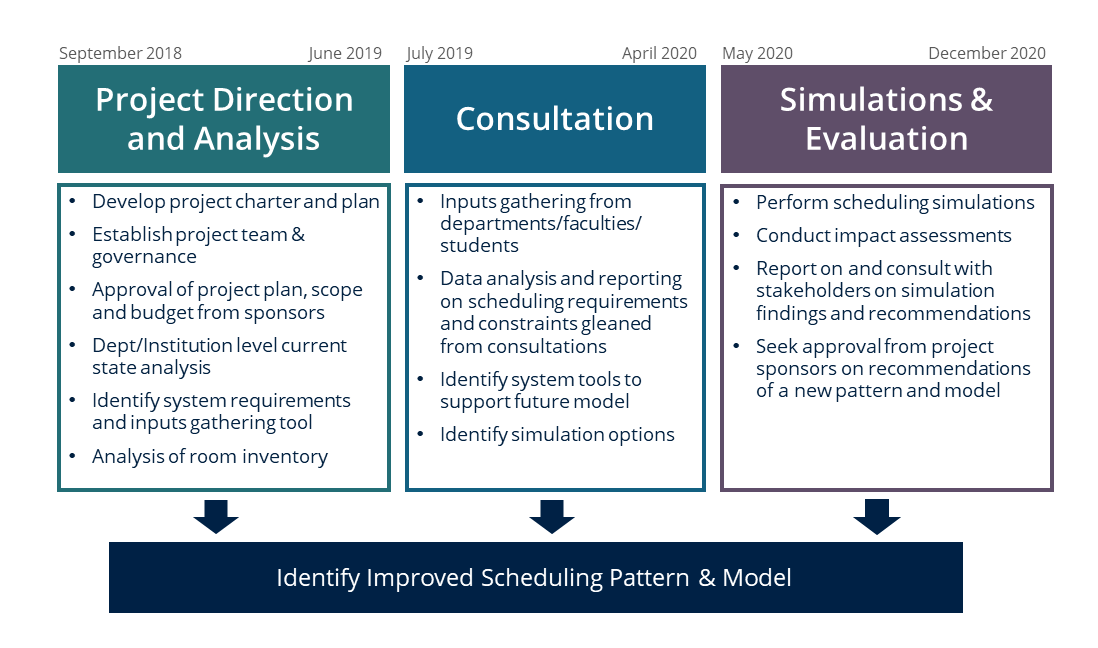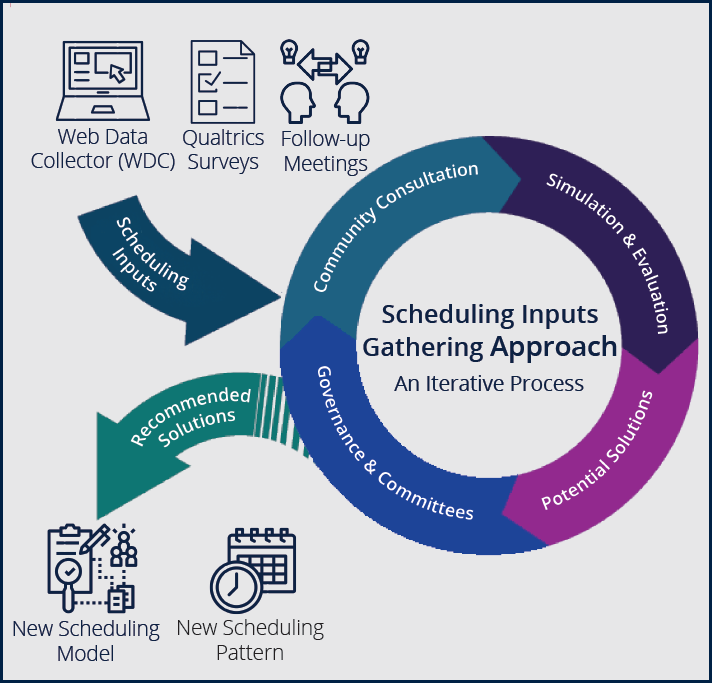This is a legacy page. For current information about course scheduling at UBC please visit the Course Scheduling wepage.
On this page:
Key Drivers
- Promote academic success.
- Improve access to accurate data to support more informed decision making.
- Improve overall satisfaction.
- Optimize current use of resources.
Project Scope
In Scope
- Academic Course Scheduling Guidelines (undergraduate vs. graduate)
- Scheduling pattern
- Academic course scheduling practices, processes, policies
- Assignment of scheduling functions and responsibilities
- Scheduling Services staffing requirements
- Inventory and utilization of general teaching space (GTS) and restricted teaching space (RTS)
- Room agreements
- Use of scheduling technology - Scientia functionality (e.g. Web Data Collector, Enterprise Activity Adjuster) and resolution of system issues
Out of Scope
- Change of scheduling technology (i.e. Scientia)
- Academic course exam scheduling
Project Plan and Timeline
2014
UBC replaced its scheduling system with Scientia and conducted a very limited review of the scheduling pattern, model, and associated business processes. As a result, stakeholder satisfaction decreased.
2016
UBC engaged Dr. Sam Conte, a consultant with the American Association of Collegiate Registrars and Admissions Office (AACRAO) to conduct a review of the Institution’s scheduling pattern that also included a review of scheduling processes, practices and related factors. The consultant report contained a number of recommendations, including:
- Discontinuing the two-tiered scheduling protocol.
- Creating scheduling zones on campus for students and instructors to have access to their classes within close proximity to each other.
- Removing meeting time and location information from the year to year course roll and including only relevant course information.
- Reviewing the assignment of scheduling functions and responsibilities.
The Learning Spaces Advisory Committee (LSAC) reviewed the recommendations in the consultant report and were in favor of making changes to the scheduling model and associated processes; however concerns were expressed about how to achieve an appropriately balanced model. Further consultation and engagement was required before decisions could be made about making changes to the scheduling pattern or model.
2018
The University executive endorsed and approved funding for a scheduling project, allowing for dedicated resources with the mandate to work collaboratively with the scheduling community to improve the scheduling pattern and model.

PHASE 1

PHASE 2

Project Approach
The project is divided into two phases to ensure community engagement and endorsement in the development of new scheduling solutions; and to ensure effective implementation and sustainment of the new scheduling pattern and model.
• Phase 1 will consist of collaborative development of a recommended new scheduling pattern and model.
• Phase 2 will consist of implementation and sustainment of the new scheduling pattern and model.

This project plan and its scope is largely focused on Phase 1 of the project, a detailed project plan for Phase 2 is under development. The high-level characteristics of this project’s approach are as follows:
- Take a holistic and innovative approach when reviewing the scheduling model and determining solutions.
- Take a consultative and iterative approach to the development and evaluation of the scheduling model.
- Ensure collaborative stakeholder engagement.
- Develop comprehensive solutions that are adaptable and scalable for future requirements.
- Ensure that success is defined and measurable.
- Ensure alignment with IRP.
- Build off and leverage work and insights generated from other activities/undertakings.
- Obtain appropriate sponsorship to support the culture shift and change management required.